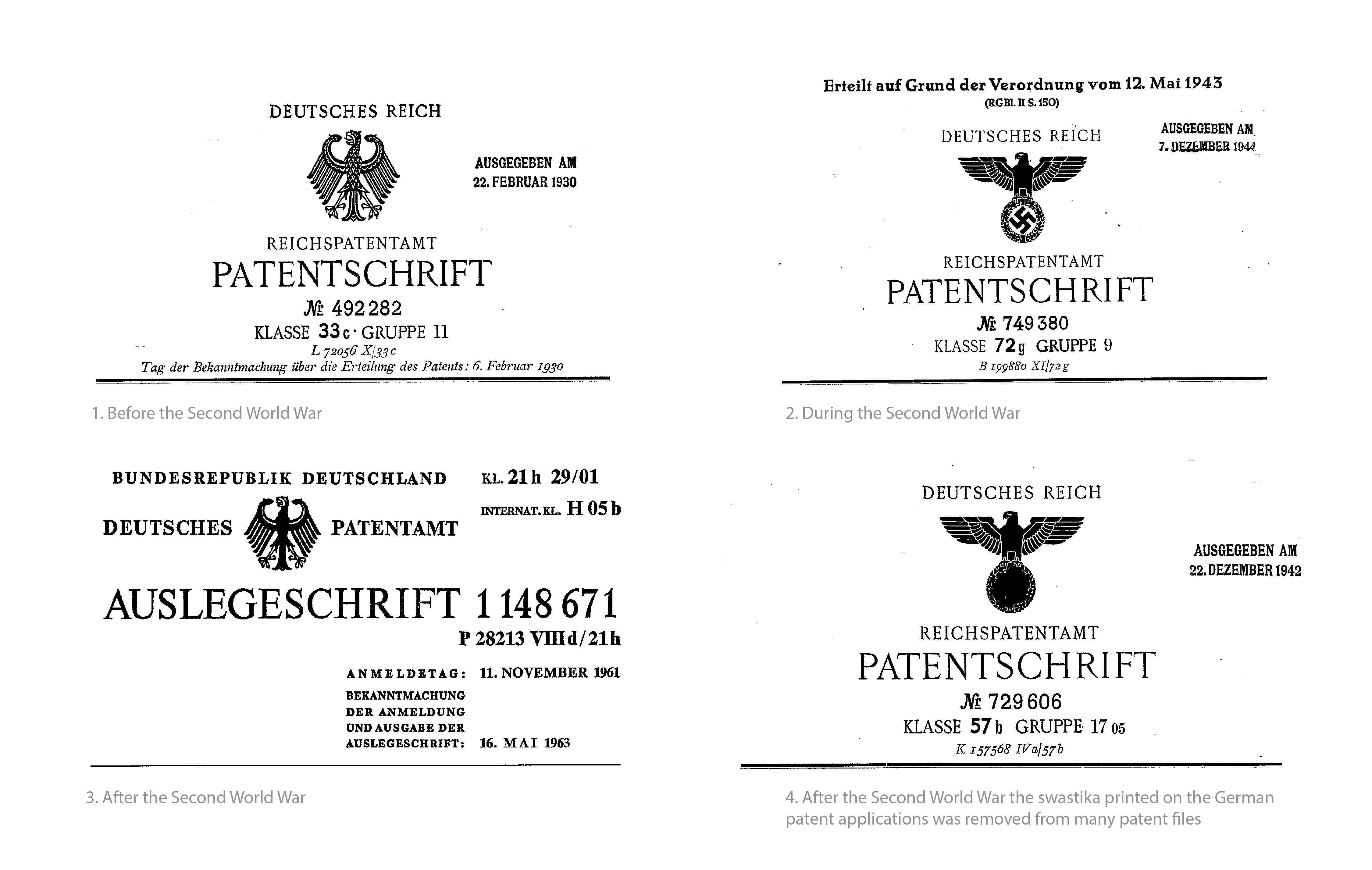
War: the patent turbulence zone
A fierce battle broke out in the IP field because of the war in Ukraine. The Russian Government issued Decree No. 299, dated March 6th, 2022, which allows national companies or individuals to use inventions, utility models and industrial designs, belonging to “unfriendly countries” of Russia, without owner permission or compensation. Its aftermath may result in deep uncertainty regarding the enforcement of IP rights in Russia. Patent applicants should strongly consider their strategies concerning the protection of their inventions in Russia, since if they do apply, their rights may be subject to an expropriation. If they do not apply, they may lose their exclusive rights to their inventions in the Russian market. Considering that patents involve precious technological information and are valuable intangible assets, this article focuses on the role of patents in war times and particularly on how these have been used as war and economic weapons from World War I (WWI) to the present.
Historical parallels
WWI began after Paris Convention (PC) was adopted in 1883. The PC was the first major step taken to help inventors to ensure that their patent applications were protected in other countries and was based on several principles that remain until today. One of these principles is the right of priority, which allows applicants to claim the original patent filing date within 12 months in other Contracting States, assuring that the novelty requirement is evaluated considering the priority date. WWI caused a decrease in the filing of patent applications in several belligerent countries. Considering the technological means of communication available, the patent agents had difficulties in communicating with colleagues from other countries, resulting in delays in the prosecution of patent applications. During WWI, the priority right was extended, allowing the applicants more time to make their decisions.
During WWI, sanctions regarding seizing patents from enemy (or hostile) countries were adopted by the belligerent countries. For example, the USA seized over 4,000 enemy patents, and, although German and the Austro- Hungarian Empire formally raised similar sanctions, a smaller number of enemy patents were seized for these countries. Amongst the patents seized by the USA, there were the Bayer’s patents in the USA, which were confiscated by the Americans in 1917. These sanctions against the German company Bayer were motivated by its production of war materials, including explosives and chemical weapons. Moreover, Bayer’s Russian subsidiary was expropriated as a result of the Russian Revolution.
World War II (WWII) triggered similar sanctions. The USA, for instance, issued the Alien Property Custodian (APC), which demanded the US Patent Office seize almost 3,000 pending patents from nationals of the enemy and enemy- occupied countries, to provide technologies developed by the enemies to the American Industry.
The expropriation of patents of the German pharmaceutical laboratories of the I.G. Farbenkonzern, a subsidiary of the Farbwerke Hoechst, is an example of practical sanctions prompted by the US government after WWII ended. The I.G. Farbenkonzern had been developing several opioid analgesic drugs before and during WWII, and several pharmacological tests had been carried out during WWII, but in the aftermath of the German defeat, the patents of the I.G. Farbenkonzern were requisitioned and expropriated by the allied forces. Methadone was a drug comprised in the scope of protection of said seized patents, and several pharmaceutical companies were able to purchase the rights for commercial production of methadone for just one dollar after approval of the commercialization of methadone in 1947.

The patent’s technological information is a strategic asset during war times. It is worth recalling the efforts of the German Patent Office (GPO), in the later years of WWII, to keep safe its patent database.
About 320,000 paper files of patent applications were evacuated to Heringen, a small town located about 170 km northeast from Frankfurt am Main, by the Germans, to avoid scientific information from being captured by enemy forces. The patent files were carefully stored 600 meters underground in a potash mine but were discovered by American troops after German capitulation.
Subsequently, the swastika printed on the German patent applications was removed from at least 120,000 public patent files, as shown in the central image of figure 2, wherein it is also possible to see the GPO’s logo before the Nazi regime (left image) and the West German Patent Office’s logo (right image), established in 1948.
War in Ukraine VS Patent System
The modern Patent Offices process most patent applications by digital means. Certainly, their main concerns in the current war situation are related to safeguarding the digital files with proper backups and protecting their computer systems from cyber-attacks, particularly taking special protection actions for unpublished patent applications. Bearing in mind the set of sanctions imposed on Russia, it would be no surprise if the Western Patent Offices blocked access to IPs (internet protocols) addresses located in Russia. Moreover, it is expectable that defensive measures, such as reinforcement of firewalls, will be provided.
Returning the discussion to the impacts of the Decree No. 299, let’s evaluate the patenting activity of the main West economic powers before the ROSPATENT and before the Eurasian Patent Office (EAPO), which has the Russian Federation as its main member, disclaiming that the most recent patent applications are yet unpublished.
195,878 patent families were published from 2001 to 2019 having an earliest priority country origin in the following jurisdictions: European Patent Office (EPO), USA, United Kingdom, France, or Germany, wherein said patent applications were filed before ROSPAT or EAPO may be originated from “unfriendly countries, according to Decree Nº 299.
The top five assignees are: Ford Global Technologies (an American automobile manufacturer), Basf (a German chemical company), Qualcomm (an American corporation), Bayer (a German pharmaceutical and life sciences company), and Safran (a French aircraft engine).
On the other hand, in the same period, only 10,570 patent families having an earliest priority country with origin in Russia or the EAPO were published by the EPO and/or by the National Patent Offices from said “unfriendly countries”, which is almost 19 times smaller than the number cited in the previous paragraph. The top five assignees are: Samsung Electronics (a South Korean electronics corporation), Yandex Europe (a Russian online search portal and other IT services), Schlumber Technology (an American oilfield services company), AO Kaspersky (a Russian provider of systems protecting computers against digital threats), and Ajinomoto Co. (a Japanese food and biotechnology corporation).
Summarily, the war disputed in the theatre of IP rights may have several developments. In the short term, the huge portfolio of patents held by “unfriendly countries” would be used by Russian economic agents, which would not have to pay any royalties to the original owners according to Decree No. 299. On the contrary, if said “unfriendly countries” decide to retaliate with similar sanctions, this would probably result in a significantly lower impact on Russia. The reason for this is based on the relatively lower number of pending patent applications or active granted patents, originating from Russian and filed in Western countries. Besides, a significant fraction of patents originating from Russia is owned by subsidiaries of Western, South-Korean, or Japanese multinationals, based in Russia, so, retaliations against this set of patents would not make sense.
Conclusion
The pillars of the Patent System, namely the national treatment and the acknowledgement of the patents as inviolable private properties are often struck down during war times. Patents are used more as tactical weapons to weaken the enemy’s economy.
The Decree No. 299, issued by the Russian Federation, enables the expropriation of new technologies by the Russian economic agents and may boost technological advances in the consolidated industries of Russia, such as oil and gas industries.
It is also possible that Russian authorities use this broad spectrum of expropriated technologies to improve some crucial technical fields, which are still undeveloped in the country. However, the economic sanctions raised by the Western powers promote continuous isolation of Russia’s economy. Sanctions will limit Russia’s capacity for production and reduce foreign investments. The potential for investments by national economic agents may also be
insufficient for the necessary research to overcome the lack of know-how, occasionally absent in patent specifications. Nevertheless, even if Russia manages to develop new technologies based on patents originating from “unfriendly countries”, the loss of Russia’s reputation in the international community and the limited markets for exporting or importing, may result in a long-time frame for Russia to recover investments in new technologies or even make these policies sustainable.
Endnotes:
• Nicolas CHACHEREAU, Gabriel GALVEZBEHAR, “The International Patent System and the First World War”. Access here.
• World Patent Information, Vol. 29, Issue 4, December 2007, Pages 339-345
• Ralf Gerlach©: A Brief Overview on the Discovery of Methadone. INDRO e.V. Münster 2004. Access here.
This article was originally published in The Patent Lawyer Magazine (July / August 2022).
Lista de Territórios
Não existem resultados para a sua pesquisa.
- África
- África do Sul
- Angola
- Argélia
- Benin
- Botsuana
- Burkina Faso
- Burundi
- Cabo Verde
- Camarões
- Chade
- Comores
- Costa do Marfim
- Djibuti
- Egito
- Eritreia
- Eswatini (Suazilândia)
- Etiópia
- Gabão
- Gâmbia
- Gana
- Guiné
- Guiné-Bissau
- Guiné-Equatorial
- Lesoto
- Libéria
- Libia
- Madagáscar
- Maiote
- Malaui
- Máli
- Marrocos
- Maurícias
- Mauritânia
- Moçambique
- Namíbia
- Níger
- Nigéria
- Quénia
- República Centro-Africana
- República Democrática do Congo
- República do Congo
- Reunião
- Ruanda
- Saara Ocidental
- São Tomé e Principe
- Seicheles
- Senegal
- Serra Leoa
- Somália
- Sudão
- Sudão do Sul
- Tanzânia
- Togo
- Tunísia
- Uganda
- Zâmbia
- Zanzibar
- Zimbábue
- África (OAPI)
- África (ARIPO)
- Mais Territórios
- Macau
- Maldivas
- Portugal
- Timor Leste
- Marca da União Europeia (EUIPO)
- Marca Internacional (Sistema de Madrid)
- Patente Europeia (IEP)
- Tratado de Cooperação em matéria de Patentes (PCT)




